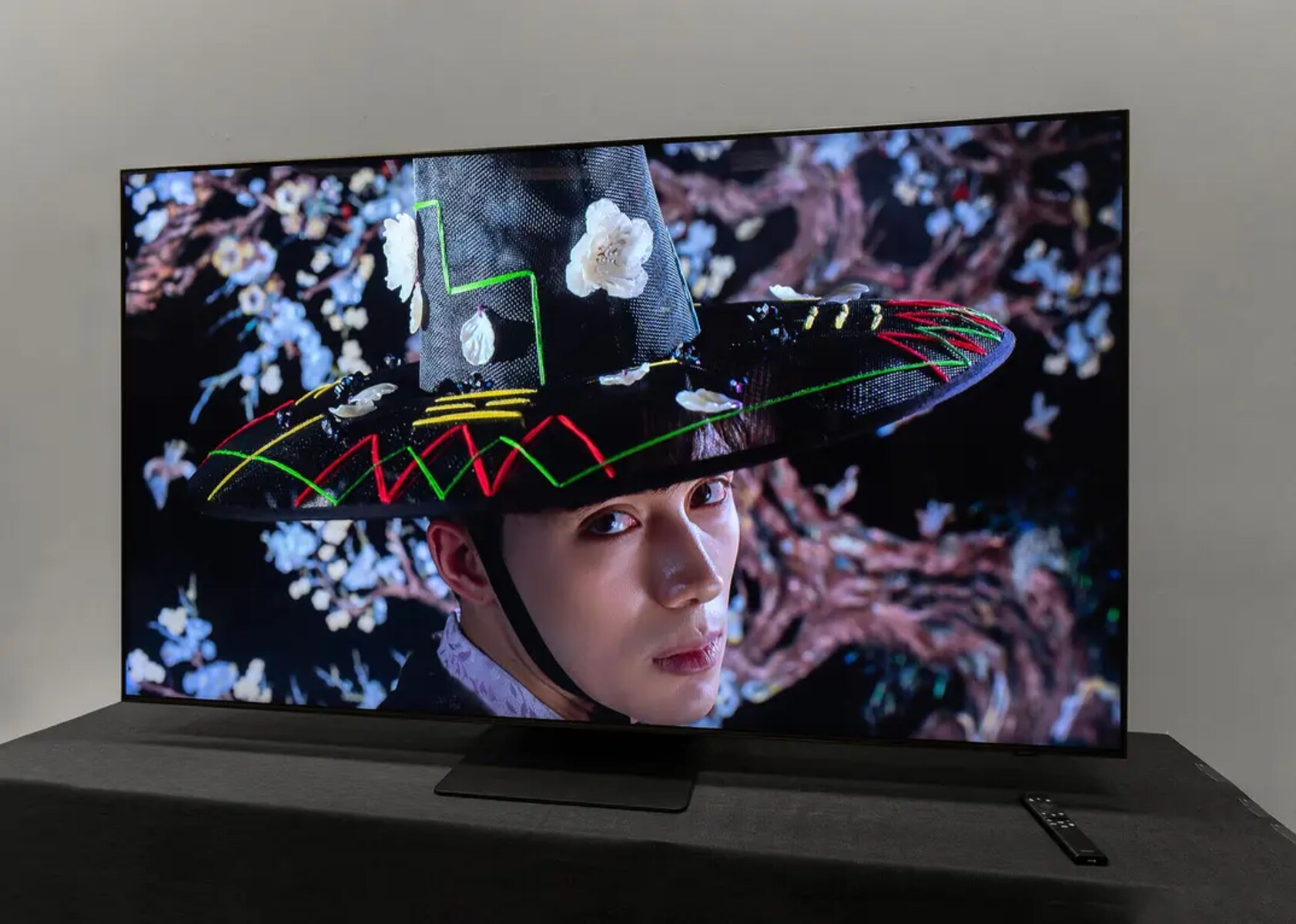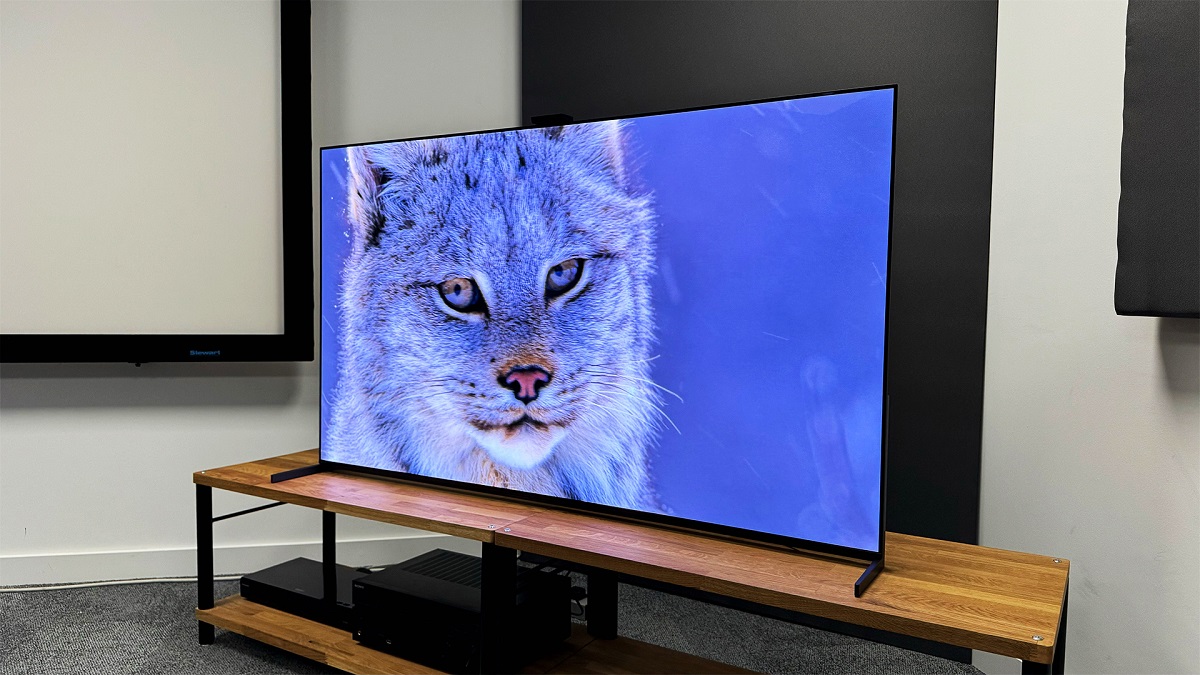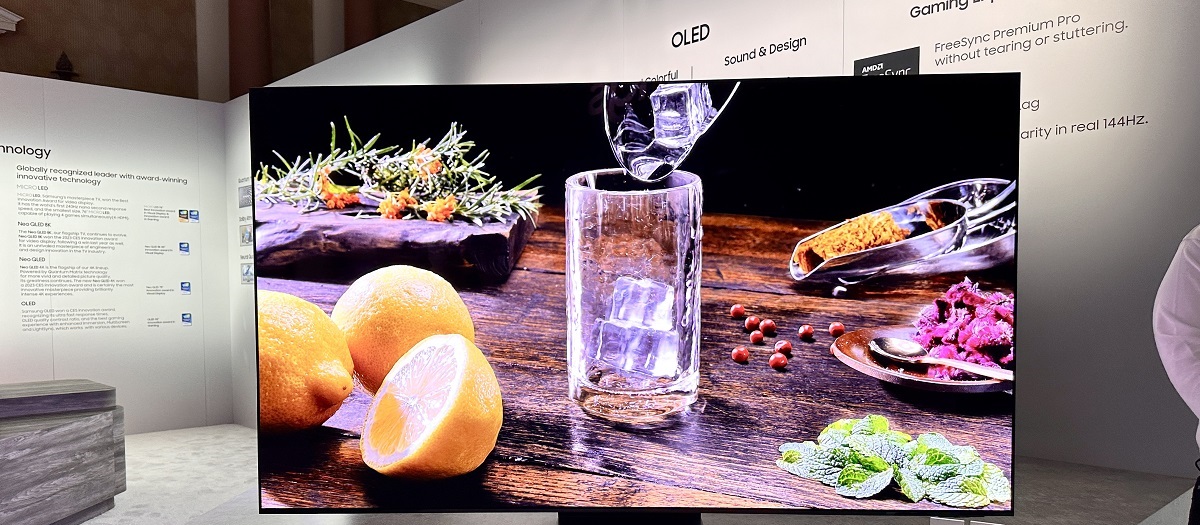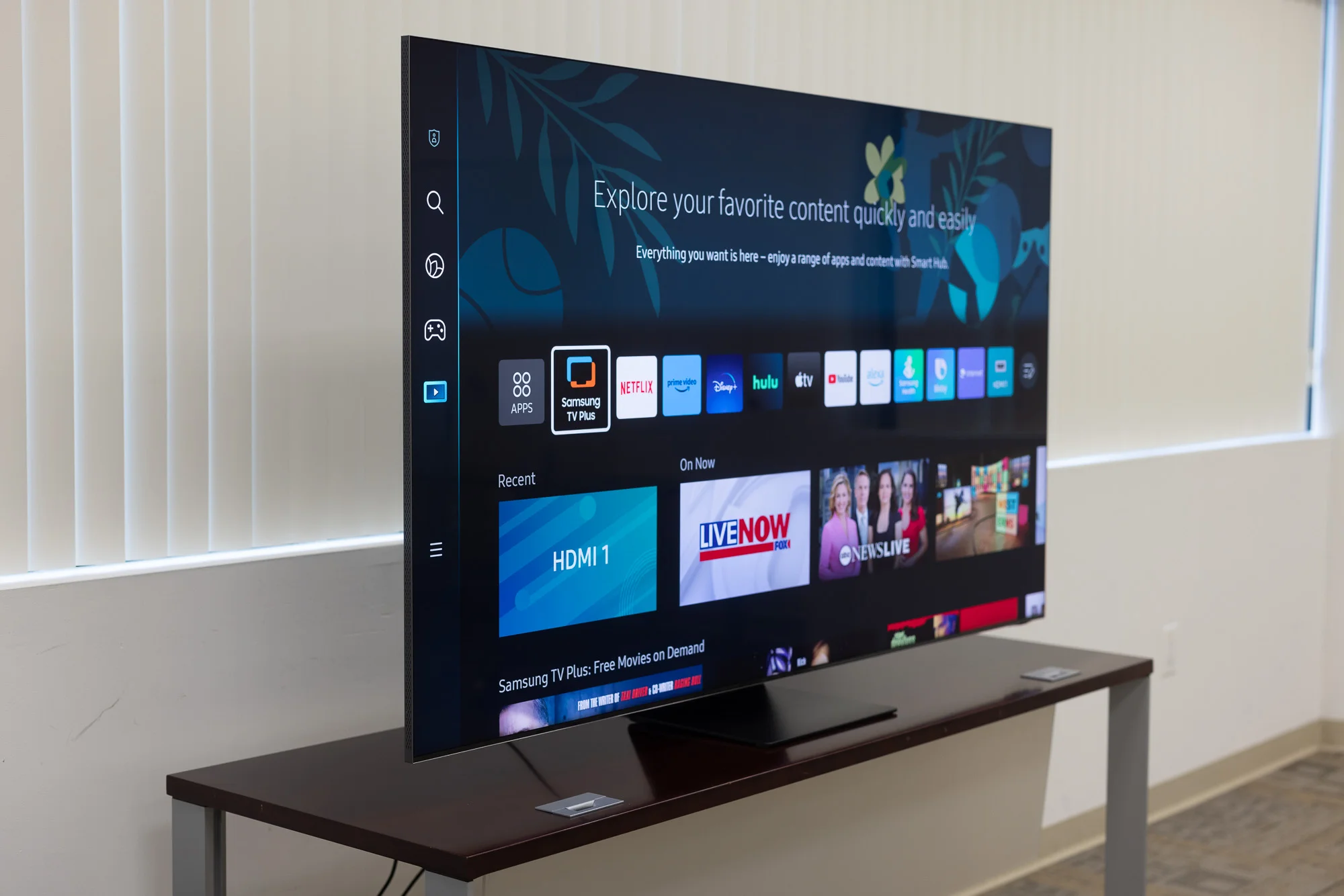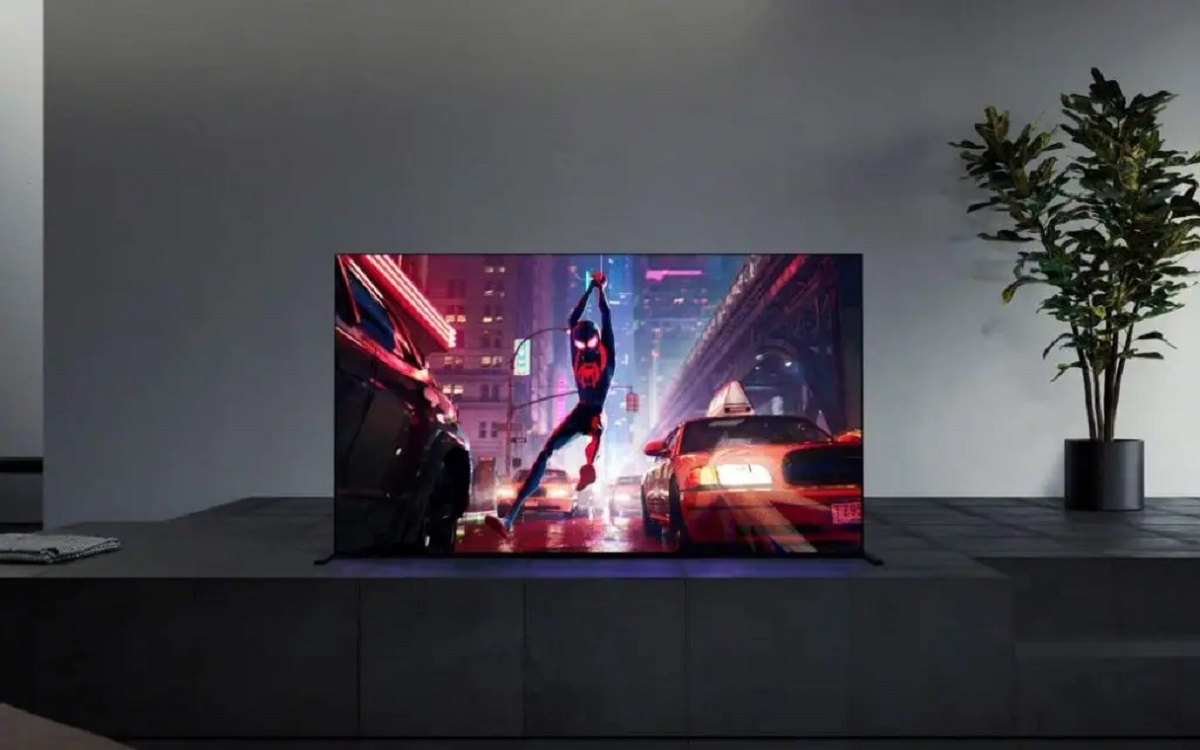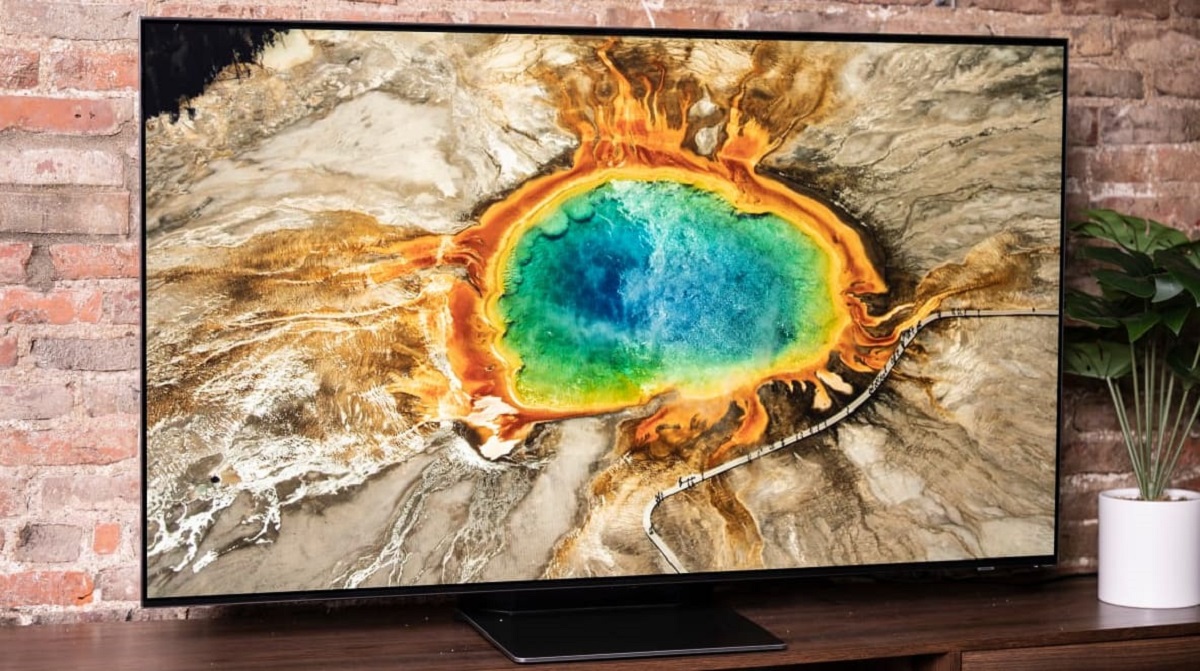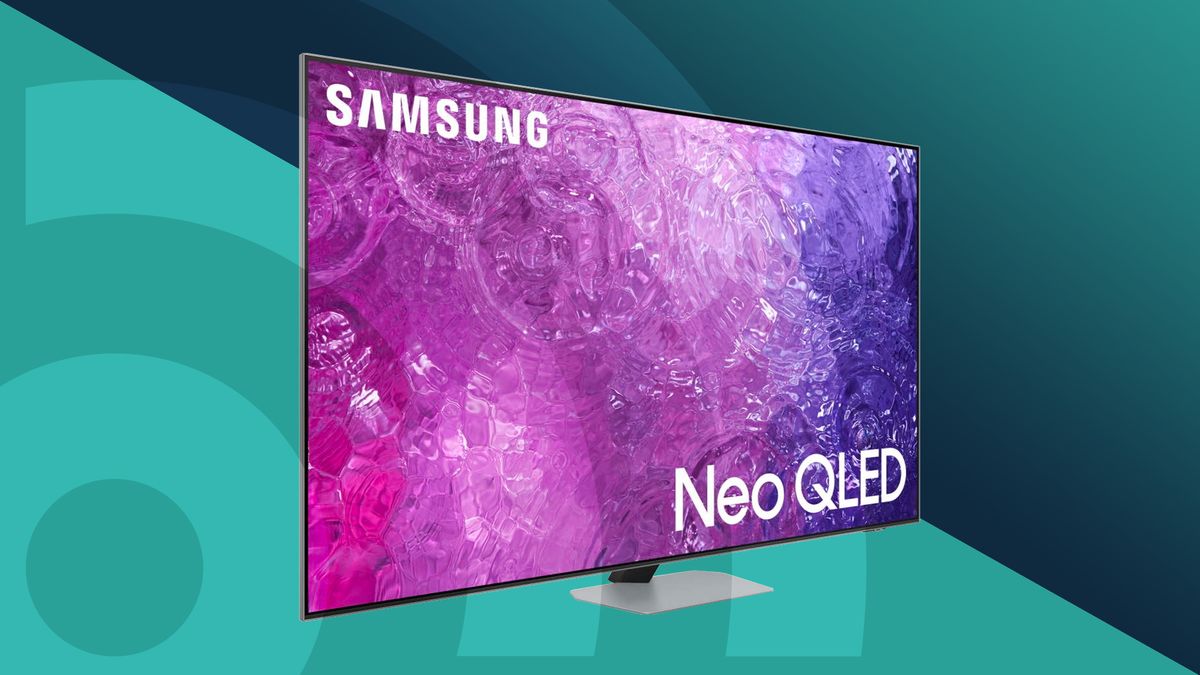Introduction
Welcome to the world of advanced television technology! With so many options available in the market, it can be overwhelming to find the perfect TV for your home. One term that you may have come across is “QLED TV”. But what exactly does it mean, and what sets it apart from other TV technologies?
QLED TV stands for Quantum Dot Light Emitting Diode Television. It is a cutting-edge display technology that offers vibrant colors, high contrast ratios, and impressive picture quality. Developed by Samsung, QLED TVs have gained immense popularity in recent years, revolutionizing the way we experience entertainment at home.
Unlike traditional LED TVs, which rely on white LED backlights, QLED TVs utilize quantum dots. These tiny nanocrystals emit different colors of light depending on their size, offering a broader color gamut and enhanced color accuracy. This makes the images on QLED TVs more lifelike and immersive.
So, how does this advanced QLED technology work? Let’s delve into the inner workings of QLED TVs in the next section.
What is QLED TV?
QLED TV, or Quantum Dot Light Emitting Diode Television, is a cutting-edge display technology that utilizes quantum dots to enhance the picture quality and color reproduction of the television screen. Developed by Samsung, QLED TVs have gained significant popularity due to their superior performance and stunning visual experience.
At the heart of QLED technology are quantum dots, which are tiny nano-sized crystals made of semiconductor material. These quantum dots emit different colors of light when stimulated by an external source such as LED backlights. The size of the quantum dots determines the specific color they emit, allowing for precise control over the color spectrum.
When compared to traditional LED TVs, QLED TVs offer several advantages. Firstly, QLED technology provides a wider color gamut, which means it can display a larger range of colors with greater accuracy. This results in more vibrant and lifelike images on the screen. Additionally, QLED TVs have higher brightness levels, allowing them to produce more vibrant and dynamic HDR (High Dynamic Range) content.
Another significant benefit of QLED TVs is their excellent color accuracy. The quantum dots used in QLED panels can produce highly saturated and pure primary colors, resulting in a more precise and realistic representation of the content being displayed. This makes them ideal for watching movies, gaming, or viewing any other type of visual media that requires accurate color reproduction.
In terms of durability, QLED TVs also have an advantage. Quantum dots are highly stable and resistant to degradation over time. This means that QLED TVs can maintain their color accuracy and picture quality for a more extended period of time, ensuring that you can enjoy a consistent viewing experience for years to come.
QLED TVs are also known for their excellent brightness levels. With the ability to reach high peak brightness levels, QLED TVs can deliver stunning HDR performance. HDR content allows for a wider dynamic range of brightness and contrast, resulting in more realistic and immersive viewing experiences.
Now that we have a good understanding of what QLED TV is, let’s delve deeper into how QLED technology works in the next section.
How does QLED technology work?
QLED technology utilizes a combination of quantum dots, LED backlights, and various layers to create the stunning picture quality that QLED TVs are known for.
At the heart of QLED technology are the quantum dots, which are microscopic nanocrystals. These quantum dots are made up of semiconductor materials, such as cadmium selenide or indium phosphide. The size of the nanocrystals determines the wavelength of light they emit, allowing for precise control over the colors produced.
In a QLED TV, there are multiple layers that work together to create the final image. The first layer is the LED backlight, which provides the source of light for the display. The LED backlight consists of a large number of white LEDs that emit a blue light. This blue light then passes through a layer of quantum dots.
When the blue light hits the quantum dots, they emit light at different wavelengths, depending on their size. This light is then combined with the blue light from the LED backlight, resulting in a much wider color spectrum. The quantum dots act as “color converters,” allowing for more accurate and vibrant colors to be displayed on the screen.
After passing through the quantum dot layer, the light enters a layer called the liquid crystal display (LCD) panel. The LCD panel consists of thousands of liquid crystal cells, which act as tiny shutters that either allow light to pass through or block it. By manipulating the liquid crystal cells, the amount of light that passes through each pixel can be controlled, creating the desired levels of brightness and contrast.
Finally, the light passes through a layer of color filters, which further refine the colors and ensure accurate color reproduction. These filters are responsible for separating the light into red, green, and blue components, which combine to create the full range of colors.
By combining the precise control of quantum dots with the light manipulation capabilities of the LCD panel, QLED technology is able to produce vivid colors, high brightness levels, and exceptional picture quality.
Now that we understand how QLED technology works, let’s explore the benefits of QLED TVs in the next section.
Benefits of QLED TVs
QLED TVs offer several benefits that make them a popular choice among consumers looking for a top-notch viewing experience. Let’s explore some of the key advantages of QLED technology:
1. Vivid and Accurate Colors: One of the standout features of QLED TVs is their ability to produce vibrant and accurate colors. Thanks to the quantum dot technology, QLED TVs can display a wider color gamut, resulting in more lifelike and immersive visuals. Whether you’re watching a movie, playing video games, or viewing photos, QLED TVs ensure that the colors are rich and true to life.
2. High Brightness Levels: QLED TVs are known for their high brightness capabilities. With the ability to reach peak brightness levels, QLED TVs excel in displaying HDR content. This means that you’ll be able to enjoy content with enhanced highlights, deeper shadows, and a more realistic representation of the intended visuals.
3. Excellent Contrast Ratios: QLED technology also offers impressive contrast ratios. The combination of bright highlights and deep blacks results in images with enhanced depth and detail. This ensures that both bright and dark scenes are well-rendered, providing a visually stunning experience.
4. Wide Viewing Angles: Unlike some other display technologies, QLED TVs maintain excellent picture quality even when viewed from an angle. This means that you can enjoy a clear and vibrant image, regardless of where you’re sitting in the room. This is particularly beneficial if you have a large family or enjoy watching TV with a group of friends.
5. Durability and Longevity: QLED TVs are designed to be durable and maintain their picture quality over time. The quantum dots used in QLED displays are highly stable and resistant to degradation. This means that your QLED TV will continue to provide a consistent and enjoyable viewing experience for many years to come.
6. Gaming Performance: With their high refresh rates and low input lag, QLED TVs are a great choice for gaming enthusiasts. The fast response times and smooth motion handling make gaming on a QLED TV an immersive and enjoyable experience.
7. Energy Efficiency: Despite their impressive performance, QLED TVs are also energy-efficient. They consume less power compared to other display technologies, contributing to a more eco-friendly and cost-effective home entertainment setup.
With their brilliant colors, excellent contrast, wide viewing angles, and durability, QLED TVs provide an exceptional visual experience. Now, let’s compare QLED TVs to OLED TVs in the next section.
QLED TV vs OLED TV
When it comes to choosing a high-quality TV, two technologies often stand out: QLED and OLED. While both offer impressive picture quality, they differ in their underlying technologies and features. Let’s compare QLED TVs and OLED TVs to help you make an informed decision:
1. Contrast: QLED TVs use LED backlights, which can result in excellent brightness levels and high contrast ratios. However, OLED TVs have individual self-emitting pixels, allowing them to achieve perfect black levels and infinite contrast. This means that OLED TVs can display deep blacks and vivid colors simultaneously, resulting in superior overall contrast.
2. Color Accuracy: QLED TVs utilize quantum dots to enhance color accuracy and widen the color gamut. This results in vibrant and lifelike colors. On the other hand, OLED TVs are known for their exceptional color accuracy, as each pixel emits its own light. This allows OLED TVs to display highly saturated and precise colors without the need for additional color filters.
3. Viewing Angles: OLED technology offers wider viewing angles compared to QLED. While QLED TVs maintain good picture quality from most angles, OLED TVs provide consistent colors and contrast, even when viewed from extreme angles. This makes OLED TVs ideal for larger rooms or spaces where viewers may not be directly in front of the screen.
4. Brightness: QLED TVs generally have higher brightness levels than OLED TVs. This makes QLED TVs well-suited for bright rooms where high ambient light may affect the viewing experience. OLED TVs, while generally not as bright, excel in low-light or dark room environments, as they can achieve perfect blacks and maintain excellent shadow detail.
5. Burn-in Risk: OLED TVs are susceptible to screen burn-in, which occurs when static images are displayed for an extended period. This can result in permanent damage to the affected pixels. QLED TVs, on the other hand, do not suffer from burn-in, making them a safer option if you regularly watch content with static elements like news tickers or gaming HUDs.
6. Price: Generally, QLED TVs are more affordable compared to OLED TVs. While both technologies offer premium picture quality, OLED TVs tend to be priced higher due to the advanced self-emitting pixel technology. QLED TVs offer a more budget-friendly option without compromising on visual performance.
In summary, QLED TVs excel in brightness, color accuracy, and affordability, making them a great choice for a wide range of viewing environments. On the other hand, OLED TVs offer exceptional contrast, perfect blacks, and wider viewing angles, making them ideal for home theaters and dedicated viewing spaces. Consider your specific needs and preferences when deciding between QLED and OLED TVs.
Next, we’ll address the question of whether QLED TVs are worth the investment.
Is QLED TV worth it?
When considering the purchase of a new TV, you might wonder if QLED technology is worth the investment. While every individual’s needs and budget may vary, QLED TVs offer several features and benefits that make them a worthy choice for many consumers.
1. Picture Quality: QLED TVs provide stunning picture quality with vibrant colors, high contrast ratios, and excellent brightness levels. The use of quantum dots enhances color accuracy and widens the color gamut, resulting in a captivating viewing experience. Whether you’re watching movies, sports, or playing video games, the visual immersion offered by QLED technology is hard to beat.
2. Durability and Longevity: QLED TVs are designed to be durable and maintain their picture quality over time. The quantum dots used in QLED displays are highly stable and resistant to degradation, ensuring that your TV’s performance remains consistent for years to come. This durability translates into a worthwhile investment that can provide long-term enjoyment.
3. Wide Range of Sizes and Price Points: QLED TVs are available in a wide range of sizes and price points, catering to various budgets and room sizes. From compact models perfect for bedrooms to large-screen options for home theaters, there is a QLED TV to suit every need. This versatility allows you to find a QLED TV that fits your requirements while offering great value for your investment.
4. Enhanced Gaming Performance: Gamers will appreciate the features that QLED TVs bring to the table. With high refresh rates, low input lag, and the ability to display rich HDR content, QLED TVs offer an immersive gaming experience. Whether you’re playing fast-paced action games or exploring detailed open-world environments, QLED technology ensures smooth and responsive gameplay.
5. Energy Efficiency: Despite their impressive performance, QLED TVs are designed to be energy-efficient. They consume less power compared to some other display technologies, saving you money on your energy bills while reducing your environmental footprint. This long-term cost savings adds to the value proposition of QLED TVs.
While QLED TVs offer a range of benefits, it’s important to consider your specific needs and budget. If you value vibrant colors, high brightness, and excellent picture quality, and if you want a durable and versatile TV for various viewing experiences, then a QLED TV might be worth the investment. However, if you prioritize perfect black levels, wider viewing angles, and a premium home theater experience, OLED TVs may be a better fit for you.
Ultimately, it’s recommended to explore the features, compare prices, and even visit a showroom to see the TV’s performance firsthand before making a decision. By doing so, you can make an informed choice and find the TV that best matches your preferences and budget.
Conclusion
In conclusion, QLED TVs offer a captivating visual experience with vibrant colors, high contrast ratios, and excellent brightness levels. The utilization of quantum dot technology enhances color accuracy and widens the color gamut, resulting in stunning picture quality. With their durability and longevity, QLED TVs are a worthwhile investment that can provide years of enjoyment.
QLED TVs excel in a variety of viewing environments, thanks to their wide range of sizes and price points. Whether you’re looking for a TV for your living room, bedroom, or home theater, there is a QLED TV to fit your needs and budget. The enhanced gaming performance of QLED TVs, along with their energy efficiency, further solidifies their value proposition.
While QLED TVs offer exceptional features and benefits, it’s important to consider individual preferences and compare them to other technologies, such as OLED TVs. OLED TVs, with their perfect blacks and wider viewing angles, may be a better fit for those seeking a premium home theater experience.
Ultimately, the decision between QLED and OLED technologies depends on factors such as contrast preferences, viewing conditions, and budget. It’s recommended to explore features, compare prices, and even see the TVs in person before making a choice.
Whether you decide on a QLED TV or explore other options, the world of advanced television technology offers a range of choices to suit your personal preferences. With QLED TVs, you can bring a remarkable visual experience into your home and enjoy captivating entertainment for years to come.







